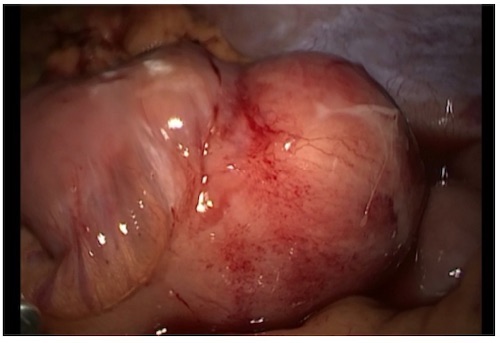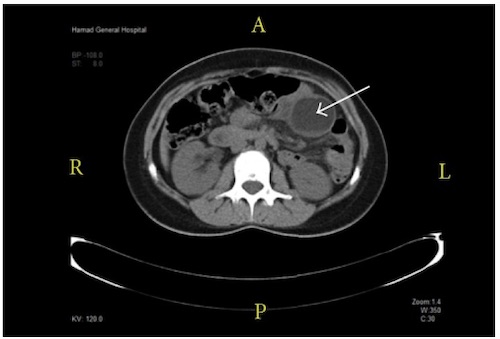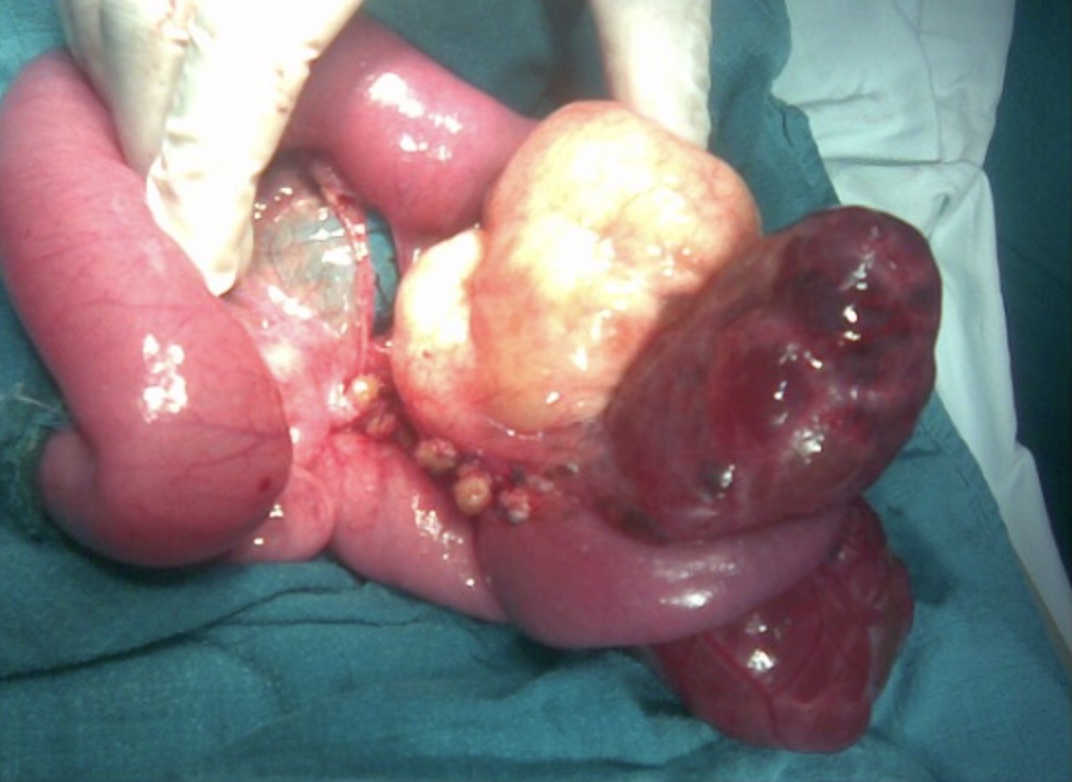Mesenteric Cysts and Tumors
Mesenteric Cysts and Tumors
Henry William Taylor, MD
Table of Contents
Mesenteric Cyst
Definition: A Rare Fluid-Filled Cavity within the Mesentery
Believed to be Caused by Ectopic Lymphatic Proliferation that Fails to Communicate with Lymphatic System Due to Trauma, Infection, or Neoplasia (Exact Etiology is Not Certain)
Presentation
- Nonspecific Symptoms, Often Found Incidentally
- Abdominal Pain
- Nausea and Vomiting
- Constipation
- Diarrhea
- May Have a Palpable Abdominal Mass
Fluid Content is Generally Straw-Colored and Proteinaceous with High Triglycerides but May be Hemorrhagic, Serous, Chylous, or Infected
Location
- Small Bowel (60%)
- Large Bowel (24%)
- Retroperitoneum (14.5%)
May Be Seen on CT but Diagnosis is Confirmed by Histopathology After Excision
Treatment
- The Primary Treatment is Surgical Excision – Prevent Recurrence or Malignant Transformation
- If Vasculature is Not Compromised: Simple Enucleation and Closure of the Mesenteric Defect
- If Vasculature is Compromised: Resection of the Mesentery and Associated Bowel

Mesenteric Cyst at Laparoscopy 1

Mesenteric Cyst (Arrow) on CT 1
Mesenteric Tumor
Types
- Lymphoma – The Most Common Mesenteric Malignancy
- Classic “Sandwich” Appearance on CT (Lymphadenopathy Surrounding Mesenteric Vessels)
- Cystic Lymphangioma – The Most Common Mesenteric Cystic Tumor
- Lipoma
- Liposarcoma
- Desmoid Tumor
- Fibroma
- Inflammatory Pseudotumor
- Actinomycosis
- Mesothelioma
- Pseudocyst
Tumors at the Root of the Mesentery are More Likely to Be Malignant
Presentation
- Nonspecific Symptoms, Often Found Incidentally
- Abdominal Pain
- Nausea and Vomiting
- Constipation
- Diarrhea
- May Have a Palpable Abdominal Mass
Diagnosis
- Imaging (CT/MRI) May Be Diagnostic for Certain Cystic Tumors or Desmoid Tumors
- Definitive Diagnosis Most Often Requires Histopathologic Examination (Either Biopsy or Surgical Resection)
- Biopsy Can Be Achieved by Fine Needle Aspiration (FNA) or Core Needle Biopsy (CNB)
- FNA is Preferred for Small Masses, Cystic Masses, or Masses Close to Vasculature
- CNB is Preferred for Large Solid Masses
- Either Ultrasound or CT-Guided
Management
- Management Varies by Tumor Type
- The Primary Treatment is Surgical Resection for the Majority of Tumors
- Well-Circumscribed Tumors May Be Amenable for Simple Enucleation
- More Invasive Tumors May Require Wider Resection and Associated Bowel Resection if Vasculature is Compromised – Caution to Avoid Short Bowel Syndrome
- Lymphoma is Primarily Managed by Chemotherapy
Symptomatic or Malignant Appearing Tumors are Often Resected without Preoperative Biopsy
Malignant Appearing Tumors that are Unresectable Should Have a Biopsy to Confirm Diagnosis Prior to Chemotherapy/Radiation
Benign Appearing Tumors that are Asymptomatic Have Variable Management – Surveillance vs. Biopsy vs. Resection
Peritoneal Carcinomatosis: Cytoreductive Surgery (CRS) and HIPEC if Appropriate

Mesenteric Cystic Lymphangioma 2
References
- Abdelaal A, Sulieman I, Aftab Z, Ahmed A, Al-Mudares S, Al Tarakji M, Almuzrakchi A, Toro A, Di Carlo I. Laparoscopy as a Diagnostic and Definitive Therapeutic Tool in Cases of Inflamed Simple Lymphatic Cysts of the Mesentery. Case Rep Surg. 2015;2015:325939. (License: CC BY-3.0)
- Rami M, Mahmoudi A, El Madi A, Khalid, Khattala, Afifi MA, Bouabdallah Y. Giant cystic lymphangioma of the mesentery: varied clinical presentation of 3 cases. Pan Afr Med J. 2012;12:7. (License: CC BY-2.0)